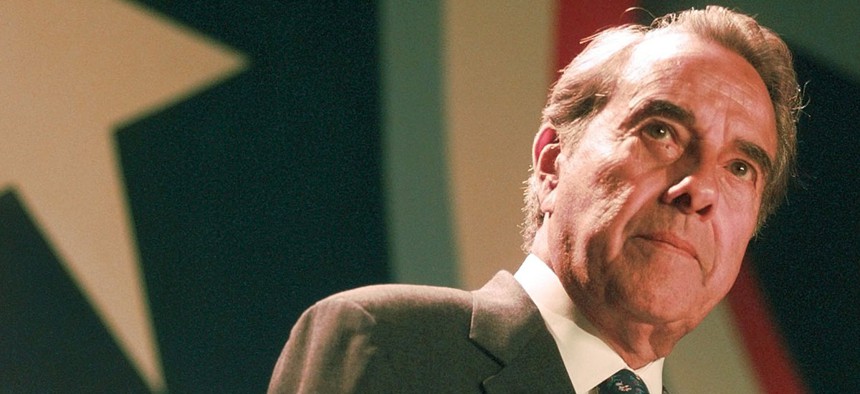
Michael S. Green/AP file photo
What the First Presidential Campaign Websites Looked Like
The site made for Bob Dole’s 1996 presidential run is a little jewel in Internet history.
One of the strange delights of the ephemeral web is that some sites, against all reason, seem never to die.
Take, for instance, the Dole/Kemp campaign website from 1996. It’s still there, in all of its dot-com-era glory. There are the links to speeches, interactive games, and information about Dole’s policy positions. (Plus, some light trash-talk about the opponent: “Bill Clinton Wants to Put ‘Big Brother’ in Your Computer,” it says on Dole’s page about Technology and the Internet.)
I mean, just look at this GIF of steam rising from a coffee cup and tell me you weren’t, for a moment, transported back to the days of dial-up and Netscape Navigator meteor showers.

Bob Dole never became president. But 20 years after his campaign website appeared online, the people who designed it shared their story with Mike Shields of The Wall Street Journal. Rob Kubasko and Vince Salvato were students at Arizona State University at the time.
“At that point if you didn’t have a website you were old and antiquated and Bob Dole didn’t need to seem any more antiquated than he was,” Kubasko told theJournal. “But was there a plan? Nooo! Literally it was, ‘we need to have a website, and it needs to be better than Bill Clinton’s.’”
Kubasko also described an absurd process for making changes to the site: “We would do stuff on the website, we’d post it live. The campaign guys would print it out, annotate them and fax the changes back to me. I had 17 feet of faxes all over my dorm. It was so ridiculous.”
At the end of the first presidential debate, before the Clinton campaign even had a website, Dole announced his web address on-air, and encouraged voters to visit. Before that, the site had only gotten hundreds of concurrent visitors. All at once, it was getting thousands. Salvato told the Journal: “I remember watching the TV and just going ‘oh [bleep]!’ Right away, I got a call from the hosting company and they said, ‘What do you want us to do?” and I was like, ‘Bring as many servers online as you can!’
The Clinton campaign experienced something similar. Their website crashed on inauguration day.
The Wall Street Journal also tracked down the people who worked on Clinton’s site, as well as those who worked on even earlier campaign websites. The entire oral history is worth reading.






